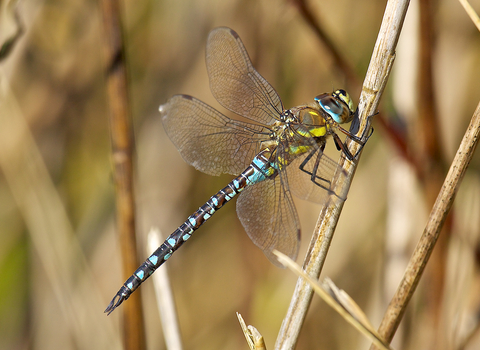
©David Martin
Migrant hawker
The Migrant hawker is not a particularly aggressive species, and may be seen feeding in large groups. It flies late into autumn and can be seen in gardens, grasslands and woodlands.
Enw gwyddonol
Aeshna mixtaPryd i'w gweld
July to NovemberSpecies information
Category
Ystadegau
Length: 6.3cmCommon.
